THE FANGO FILES: Issue #07 — On The Dark Path To Genre Magazine Success
Issue #6 was an important turning point for Fangoria, with the young publication taking a decisive turn towards the dark side of genre fare. Issue #7 continues the move in that direction, bringing the magazine's developing house style into sharper focus.A heartfelt editorial memorializing the then-recent passings of Alfred Hitchcock, Mario Bava and George Pal starts things on the right note. It's a smart, heartfelt piece that lets the horror fan know that the magazine has its heart in the right place (and 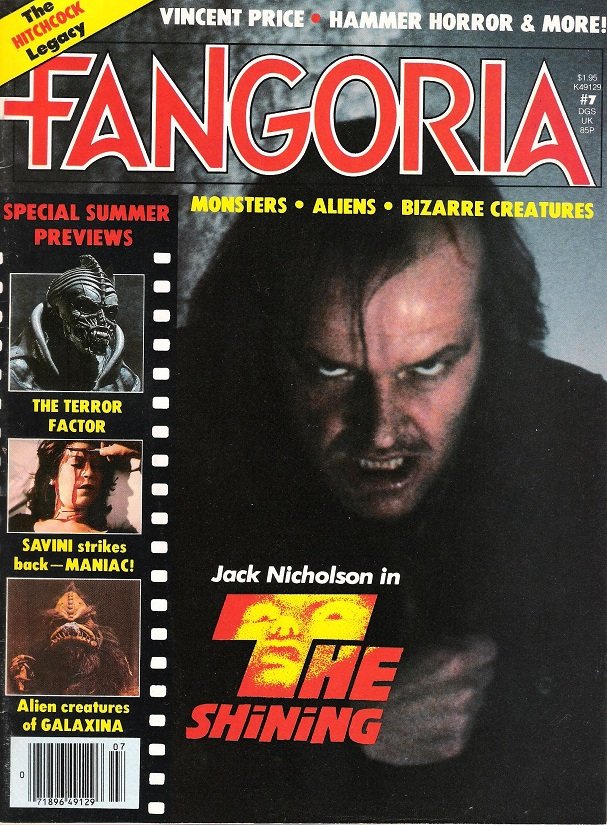 the brains necessary to translate that into good reading). From there, the magazine delves into a series of film previews, profiles and retro-themed articles that were becoming its trademark mixture of fare.The issue kicks off its articles with a strong one-two punch of pieces on the William Lustig classic Maniac. The first is a making-of article built around an interview with Lustig that also includes a few quips from Caroline Munro. Lustig is no shrinking violet: in fact, his personality reveals itself to be fully-formed as he doles out a mixture of blunt opinions and thoughtful analysis on the state of horror filmmaking. Brusque but compelling, he shows the savvy mindset that has allowed him to stay successful in the horror/cult-flick business for multiple decades.The other Maniac article is an interview with Tom Savini in which he lays out the techniques used to
the brains necessary to translate that into good reading). From there, the magazine delves into a series of film previews, profiles and retro-themed articles that were becoming its trademark mixture of fare.The issue kicks off its articles with a strong one-two punch of pieces on the William Lustig classic Maniac. The first is a making-of article built around an interview with Lustig that also includes a few quips from Caroline Munro. Lustig is no shrinking violet: in fact, his personality reveals itself to be fully-formed as he doles out a mixture of blunt opinions and thoughtful analysis on the state of horror filmmaking. Brusque but compelling, he shows the savvy mindset that has allowed him to stay successful in the horror/cult-flick business for multiple decades.The other Maniac article is an interview with Tom Savini in which he lays out the techniques used to 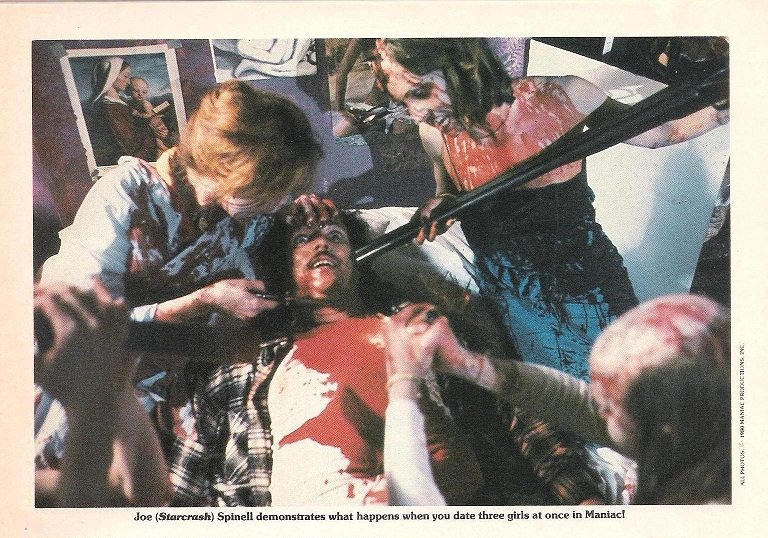 achieve several of the film's show-stopping gore effects in great detail. His enthusiasm is contagious and the piece is backed up by some grisly pictures of his handiwork. Both pieces were written by Steve Swires, a Starlog vet who knocks the stories out in a brisk, engaging style (sadly, he passed away in 2006 after a long career in the fandom press).Budding b-flick auteur Jim Wynorski also scores a trifecta of articles in this issue: there's a profile of visual-fx pro Robert Short that allows him to plug his producing debut The Terror Factor
achieve several of the film's show-stopping gore effects in great detail. His enthusiasm is contagious and the piece is backed up by some grisly pictures of his handiwork. Both pieces were written by Steve Swires, a Starlog vet who knocks the stories out in a brisk, engaging style (sadly, he passed away in 2006 after a long career in the fandom press).Budding b-flick auteur Jim Wynorski also scores a trifecta of articles in this issue: there's a profile of visual-fx pro Robert Short that allows him to plug his producing debut The Terror Factor 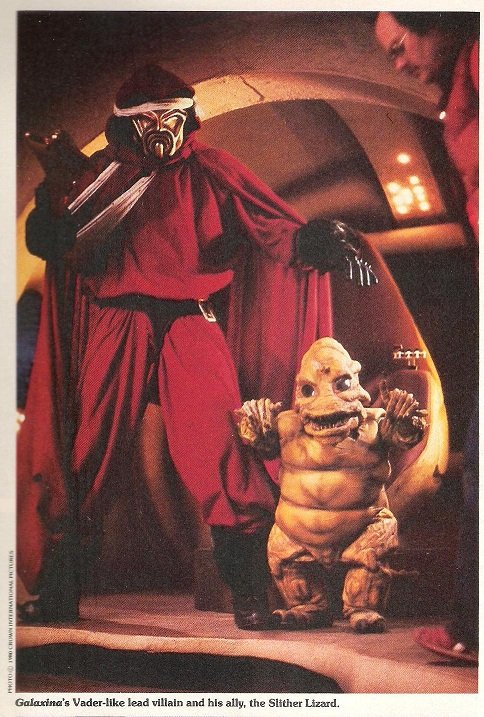 (better known as Scared To Death), a profile of makeup fx-man Chris Walas that focuses on his work in Galaxina and a quickie look at The Shining (the cover story). The pieces on Short and Walas are pretty well-written and entertaining but The Shining article is oddly insubstantial. It's a mix of canned-sounding production info and rah-rah cheerleading that harkens back to the repurposed press-release articles that dogged that early issues of Fangoria.It's also interes
(better known as Scared To Death), a profile of makeup fx-man Chris Walas that focuses on his work in Galaxina and a quickie look at The Shining (the cover story). The pieces on Short and Walas are pretty well-written and entertaining but The Shining article is oddly insubstantial. It's a mix of canned-sounding production info and rah-rah cheerleading that harkens back to the repurposed press-release articles that dogged that early issues of Fangoria.It's also interes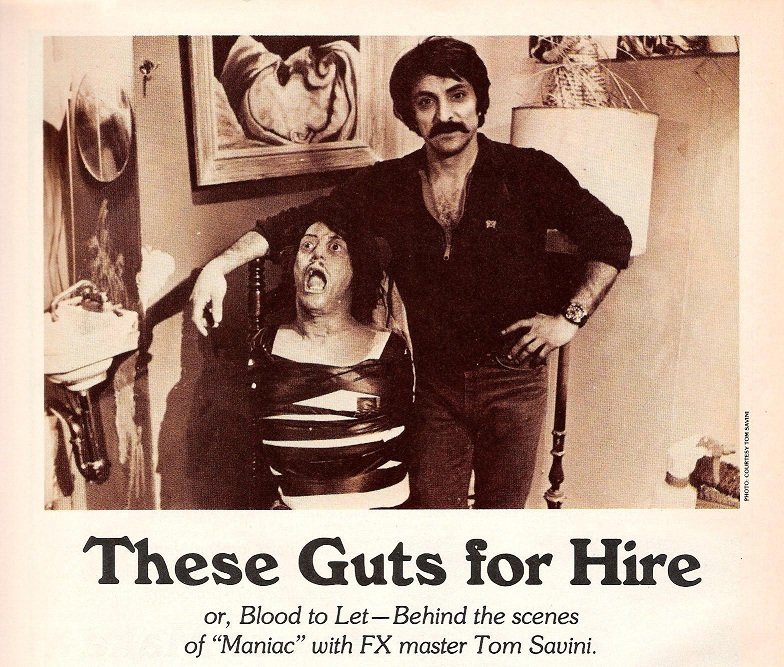 ting to note that Wynorski used the Walas article to plug the American release of Island Of The Fishmen, a Roger Corman-sponsored reworking of a Sergio Martino film that boasts some added effects created by Walas (who also doubled as a fishman in the new footage). Wynorski worked on the a re-release of this film for New World, devising a new title (Screamers) and ad campaign. The last of the film-preview articles covers Watcher In The Woods, Disney's oddball sci-fi/horror crossover flick. It's an interesting read because the studio is unusually forthcoming about the reshoots they did on the film: in fact, that angle is the centerpiece of the article.
ting to note that Wynorski used the Walas article to plug the American release of Island Of The Fishmen, a Roger Corman-sponsored reworking of a Sergio Martino film that boasts some added effects created by Walas (who also doubled as a fishman in the new footage). Wynorski worked on the a re-release of this film for New World, devising a new title (Screamers) and ad campaign. The last of the film-preview articles covers Watcher In The Woods, Disney's oddball sci-fi/horror crossover flick. It's an interesting read because the studio is unusually forthcoming about the reshoots they did on the film: in fact, that angle is the centerpiece of the article.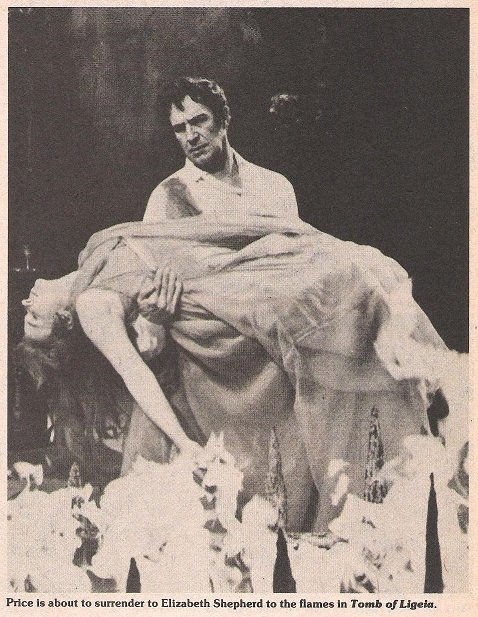 The remainder of the issue's articles are devoted to the quality retrospectives that have always been a Fangoria hallmark. There are two worthwhile reads for Hammer Films fans: the first is a brief but illuminating look back at Curse Of Frankenstein and the second is a more in-depth piece on Captain Kronos, Vampire Hunter that incorporates plentiful interview quips from writer/director Brian Clemens and star Caroline Munro. The magazine did horror fans a real favor with the latter article, as the film was obscure and hard to see at the time. There is also the second part of an interview with Vincent Price that
The remainder of the issue's articles are devoted to the quality retrospectives that have always been a Fangoria hallmark. There are two worthwhile reads for Hammer Films fans: the first is a brief but illuminating look back at Curse Of Frankenstein and the second is a more in-depth piece on Captain Kronos, Vampire Hunter that incorporates plentiful interview quips from writer/director Brian Clemens and star Caroline Munro. The magazine did horror fans a real favor with the latter article, as the film was obscure and hard to see at the time. There is also the second part of an interview with Vincent Price that 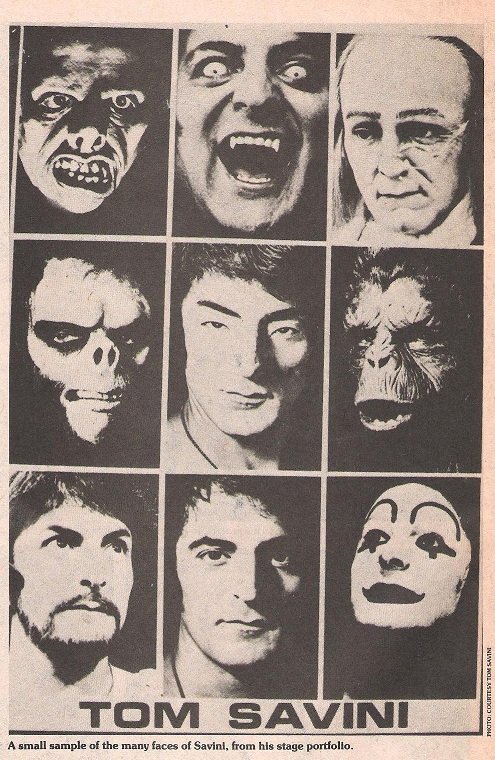 starts with his work in the Poe films but broadens into a discussion of his entire career, including everything from House Of Wax to the Dr. Phibes films. It's a compelling read and its value is further bolstered by a detailed filmography for his fantasy-oriented credits.Bob Martin caps the retrospective fare with a Chuck Jones interview and the first installment in a look at Alfred Hitchcock's career. It might seems odd to interview a Warner Brothers animator in Fangoria but it's worth noting that Jones was an influence on filmmakers as diverse as Steven Spielberg and Joe Dante. The Hitchcock piece is excellent, mixing biographical material with a well-informed analysis of Hitchcock's visual
starts with his work in the Poe films but broadens into a discussion of his entire career, including everything from House Of Wax to the Dr. Phibes films. It's a compelling read and its value is further bolstered by a detailed filmography for his fantasy-oriented credits.Bob Martin caps the retrospective fare with a Chuck Jones interview and the first installment in a look at Alfred Hitchcock's career. It might seems odd to interview a Warner Brothers animator in Fangoria but it's worth noting that Jones was an influence on filmmakers as diverse as Steven Spielberg and Joe Dante. The Hitchcock piece is excellent, mixing biographical material with a well-informed analysis of Hitchcock's visual 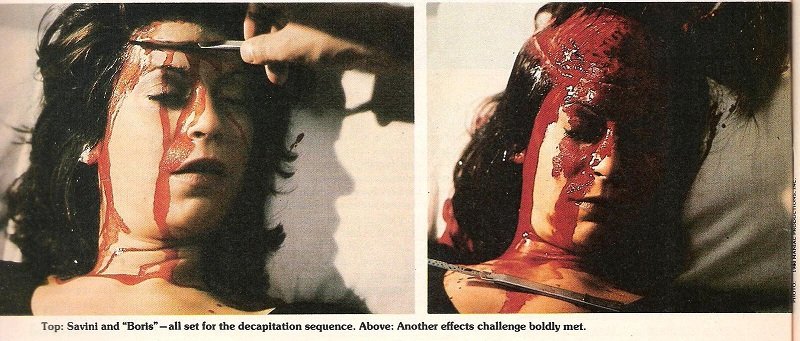 storytelling techniques. It also includes a nice filmography with synopses that point out the famous Hitchcock cameos in each film.As usual, Monster Invasion closes out the article with capsule-sized film news. There's lot of interesting stuff in this issue: an early report on Halloween II involves a different premise
storytelling techniques. It also includes a nice filmography with synopses that point out the famous Hitchcock cameos in each film.As usual, Monster Invasion closes out the article with capsule-sized film news. There's lot of interesting stuff in this issue: an early report on Halloween II involves a different premise 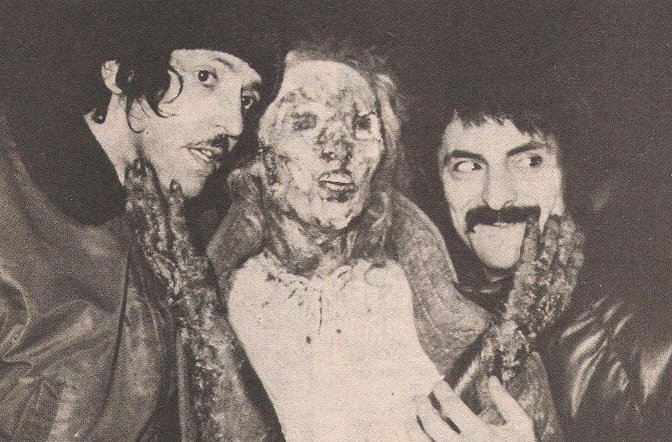 with Laurie in a high-rise apartment building, Pete Townshend's plans to revive Lifehouse as a feature film with the involvement of Ray Bradbury and Nicholas Roeg and even a throwaway mention of a David Cronenberg version of Frankenstein(!).In short, this was another solid issue for the Fangoria crew. The occasional sci-fi elements are better integrated into the magazine's horror-focused style and the overall level of writing really impresses. They hadn't reached the glory days quite yet - but they were definitely on the right road.
with Laurie in a high-rise apartment building, Pete Townshend's plans to revive Lifehouse as a feature film with the involvement of Ray Bradbury and Nicholas Roeg and even a throwaway mention of a David Cronenberg version of Frankenstein(!).In short, this was another solid issue for the Fangoria crew. The occasional sci-fi elements are better integrated into the magazine's horror-focused style and the overall level of writing really impresses. They hadn't reached the glory days quite yet - but they were definitely on the right road.


